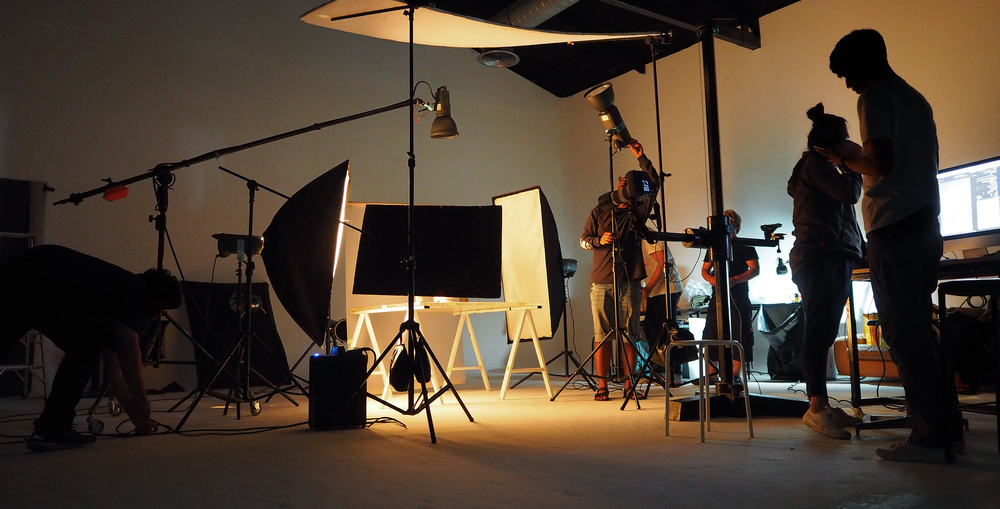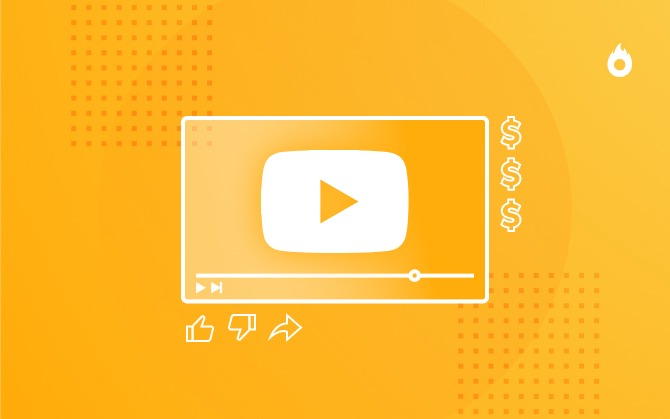
What is Storyboard and why use it when doing video marketing?
Video marketing will never be the same after storyboards. Learn what it is, the types and check out tips for creating yours.

What will we see in this post
Did you know, according to Hubspot, 72% of users prefer to watch a video to learn something rather than read text? Video marketing has never been so popular. And the trend is for it to grow bigger and bigger, as the storyboard simplifies every step of creation.
Do want to know how to plan content more effectively, how to present your ideas to others clearly, and how to avoid problems during production? We have the best tips for achieving your goals and being recognized in the market.
In this post, we will talk about the concept of storyboard, where it came from, the main types and best sketching tips. Keep reading!
After all, what is a storyboard?
The storyboard is a visual sketch that illustrates the sequence of a story. It consists of a series of thumbnail images that convey what happens in a plot, from beginning to end. It also includes notes about what is happening in each frame.
It’s a lot like a comic book. It is usually hand drawn, although some people prefer to use storyboard software to create the images.
What is the origin of the storyboard?
To answer that question, we have to go back in a time machine to the mid-1930s when Walt Disney created a mouse named Mickey that would change the history of entertainment forever.
Disney has pioneered many things. He developed the first hand-drawn feature film, invented audio animatronics (robotic animation) and made the first storyboard.
Why create a storyboard?
A video requires a lot of detail, and they are all important. It is therefore difficult (if not almost impossible) to create the piece out of nowhere, suddenly. The more you can plan, the more successful your video will be.
The storyboard adds an extra step to the creation process. But it is worth spending time with it, because the results can exceed expectations. And the benefits are visible: from the start, it helps you organize the ideas in your head strategically and more coherently.
It is often complicated to convey thoughts using just words. So the storyboard fills that gap because it makes you imagine the kind of project you want to do.
The storyboard simplifies everything that comes later. With it, you can bring a video marketing strategy to life more effectively. At the same time, you are less likely to make costly mistakes or waste time on impractical ideas.
What are the types of storyboards?
Here are the different types of storyboards. Keep up!
1. Traditional
Traditional storyboards involve a series of pencil sketches that help the writer, producer, and director visualize the initial idea before they start shooting or animating. They are very common in TV and movies because they allow changes to be made quickly.
2. Thumbnail
These are usually used by a small team who already has an understanding of how to visually portray the idea. Sketching is very quick and easy to create since no text and no details are required.
3. Digital
Digital is perfect for animated videos because you can use the exact graphics that will be shown in the video. Thus, everyone involved can have a clear view of what the finished product will look like.
What tips are key to creating a good storyboard?
1. Define where you want to get
Before you start doodling, do some pre-planning. You’ll waste time and paper (and probably get frustrated quickly) if you try to use a pen. Start by thinking about what you want to achieve when making the video.
For example, do you want to sell more than one product, reinforce your brand image, or create a speaking event? How do you want people to feel after watching your presentation? Setting clear and project-specific goals is a critical task for the next steps.
2. Organize ideas
Invent as many situations as possible for your sketch. Write down all, even those that seem out of the ordinary. Try to combine different events to see what happens. After all, what is a storyboard if it doesn’t help put everything into practice?
If there are other people involved in your team, ask them to brainstorm with you to further enrich the video content. It is amazing when creative energies connect.
3. Create a timeline
When the idea is ready, start sketching a timeline. Identify the beginning, middle and end of the story, as well as any important transitions. Make sure there is consistency between one frame and another.
Short commercial videos do not need a complicated plot, but creativity and a satisfactory resolution. If you find gaps along the way, refer to the notes to find out how to solve issues.
4. Start drawing
Now is the time to start putting your vision on paper. Draw a series of frames on a sheet or get a storyboard template on the Internet. Set aside generous space to take notes. Make one frame at a time, start sketching the action of your comic video.
Doing the job by hand is the fastest and most accurate way to get your ideas out of your head. If you find it necessary to use technology resources to convey the story, you can use storyboard software to work around the issue.
Use the frames to make things easier for everyone during production. For each thumbnail, make detailed notes about what is happening and what visual or emotional effect you want to achieve.
If you have details like props, angles, and special effects in mind, include that information as well. You can write notes on the back of the draft if there is not enough space in front.
5. Understand camera movements
Understanding the camera plan is essential to create characters, draw their poses, and tell the story. Therefore, observe the way the operator uses the device, ask questions, and find your answers.
Find out what types of movement they will use. This way you will have amazing insights, such as zooming in on the drawing at the right time, for example. Also, identify whether the characters created portray the current mood of the scene or fit the context.
6. Value character reaction
The movie moves fast. The public can only look at one thing at a time. So including multiple ideas in a drawing can cause communication “noise” and make it hard to understand it. So do not hesitate to create a frame to highlight the idea.
If an event needs more than one step to be described, you will have to draw each step. For example, if a character sees something and reacts, draw them looking for something, then what they see and then their reaction. That way all the information will be well presented.
7. Don’t get stuck on the perfectionist trap
Remember that storyboarding is a tool, not a work of art in itself. Avoid getting so involved that you forget why you are sketching. Artistic skills are important during the process, but creative talent is key.
As long as you can convey your ideas clearly, it doesn’t matter if your characters are stickers, or if the props are circles or squares. Focus on materializing your goals to get the right message across.
8. Make a thorough review
You have finished the storyboard and now you want to take a look at the details. But how do you make sure everything is ready before you deliver the definitive model? It is common to feel that something is missing that would make a big difference.
Review is one of the most important parts of the storyboarding process. Instead of looking at review as a task, look at it as an opportunity to try different approaches and make your video even better.
If necessary, do tests. Try moving frames or creating slightly different versions of the story. Nothing is permanent on a storyboard. Trying new things can lead to unexpected ideas. Just save all created versions if you decide to discard an idea and return to an earlier one.
9. Get feedback
If others are helping to create this video, show your progress and ask for feedback. Early storyboard drafts provide a great opportunity to discuss creative choices, solve problems, and ensure that the finished work is in line with the goals you set from the beginning.
If the project offers a panoramic view of your proposal, then use it. When creating a storyboard, you may encounter problems with sequencing or plot that you missed when making the timeline. Now is the time to fix these issues so that the final video is well organized.
See how creating a storyboard can be useful for your strategy?
The goal of storyboarding is to make a better video while saving you time and future hassle. The advantages are many: it helps you organize ideas, simplifies the creative process, presents the sketch in detail to the team, and so on.
It is not always easy to convey thoughts through words. In this sense, the storyboard fulfills the need to express an idea objectively, as the drawings simplify all future stages of the audiovisual project. Thus, the main types of storyboards are: traditional, thumbnail and digital.
If you want to create compelling videos, whether for your business or to boost your career, storyboarding is an essential step in the process. What’s more, it’s fun and helps you explain your insights to others. Think about it the next time you submit a project.
If you enjoyed this article, take a moment to learn more about audio parameters and how to improve your videos’ audio quality.




